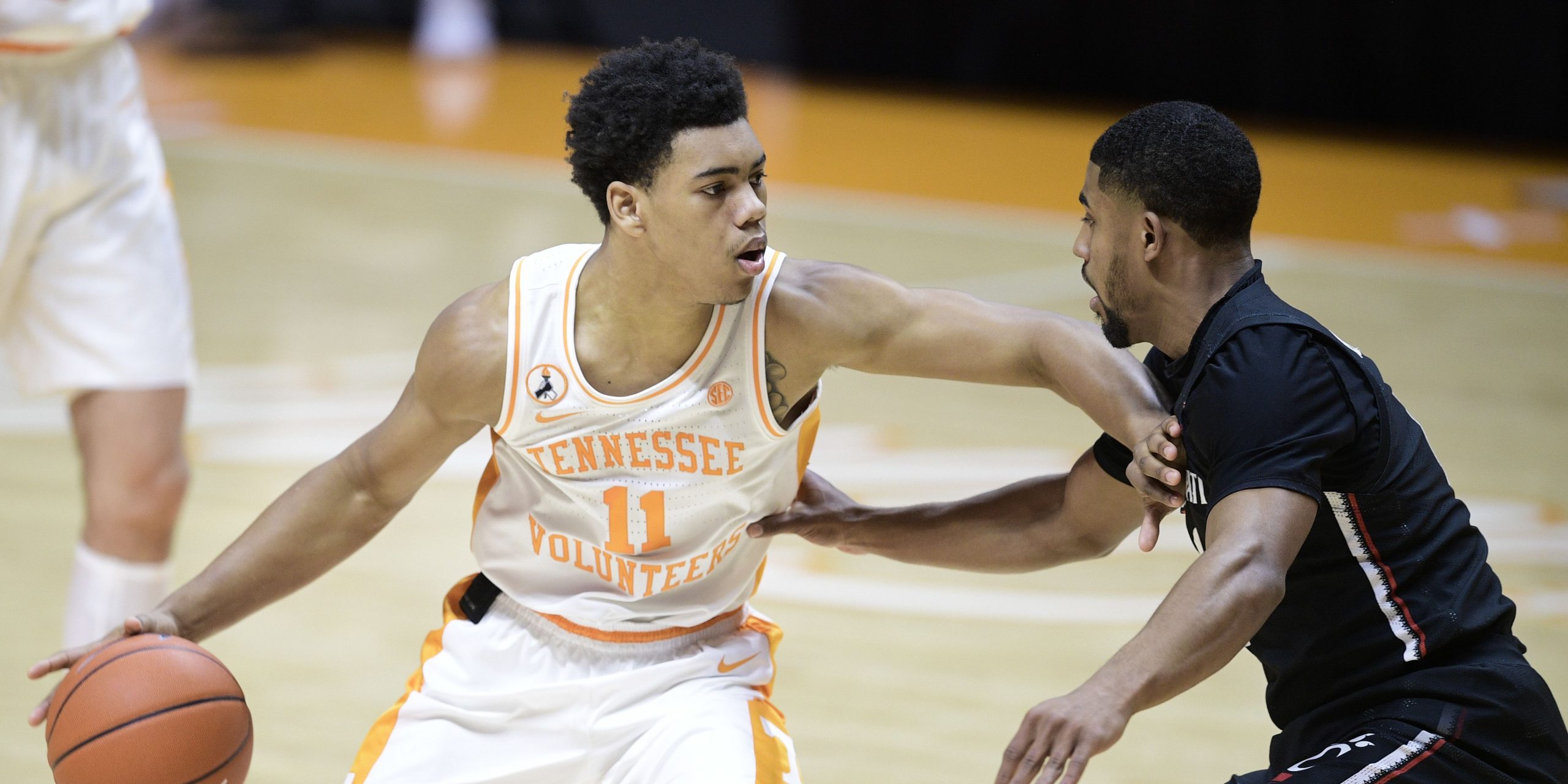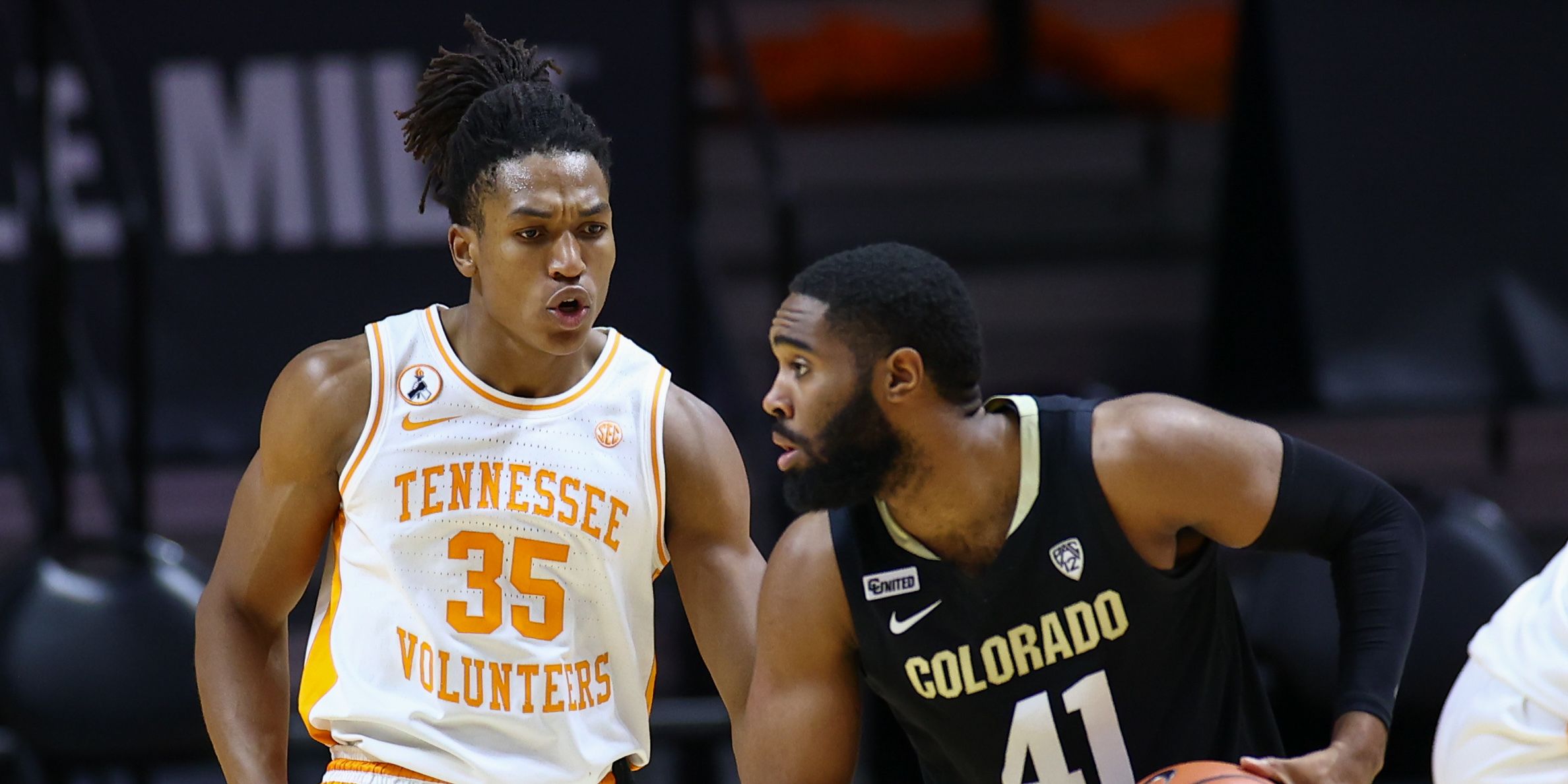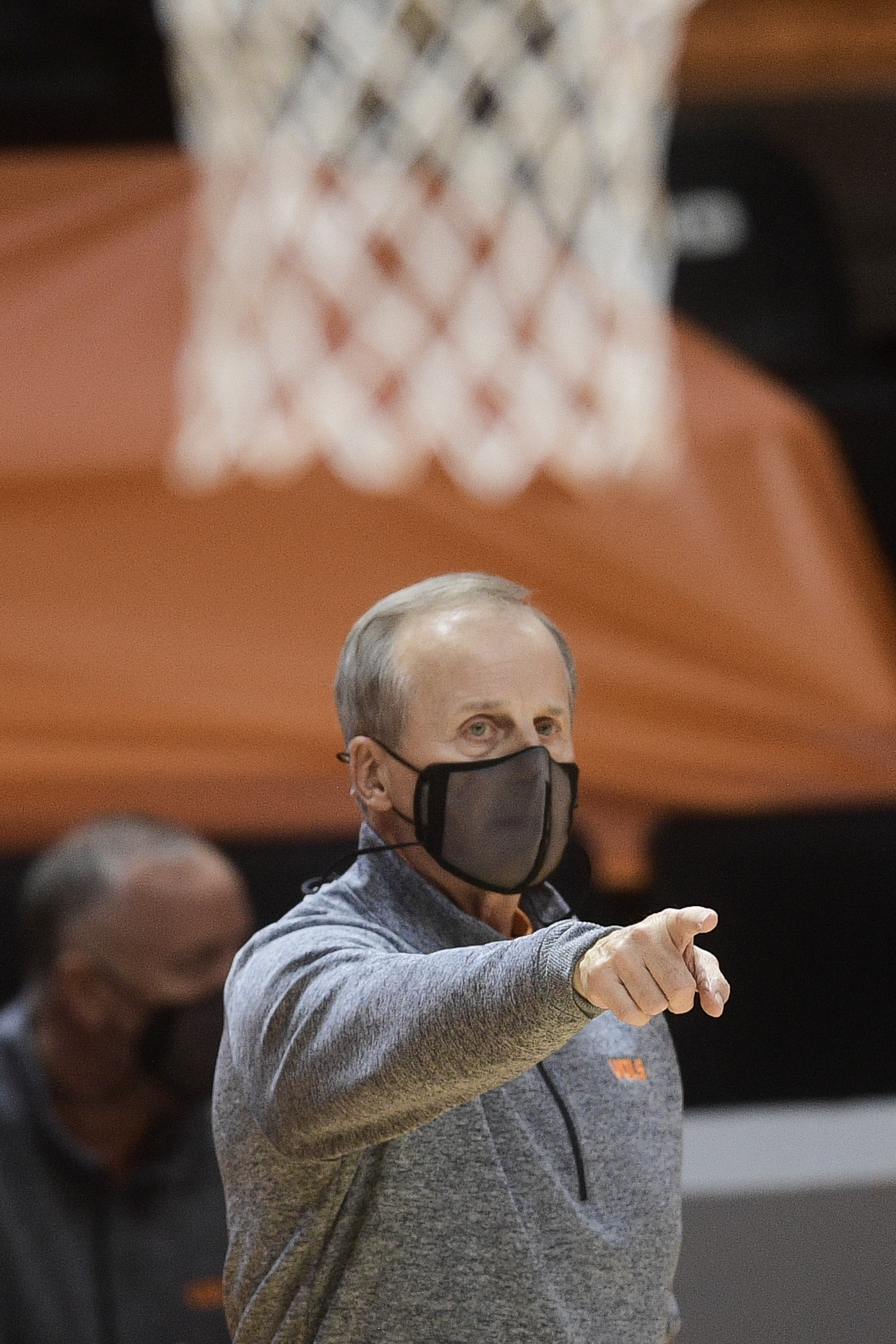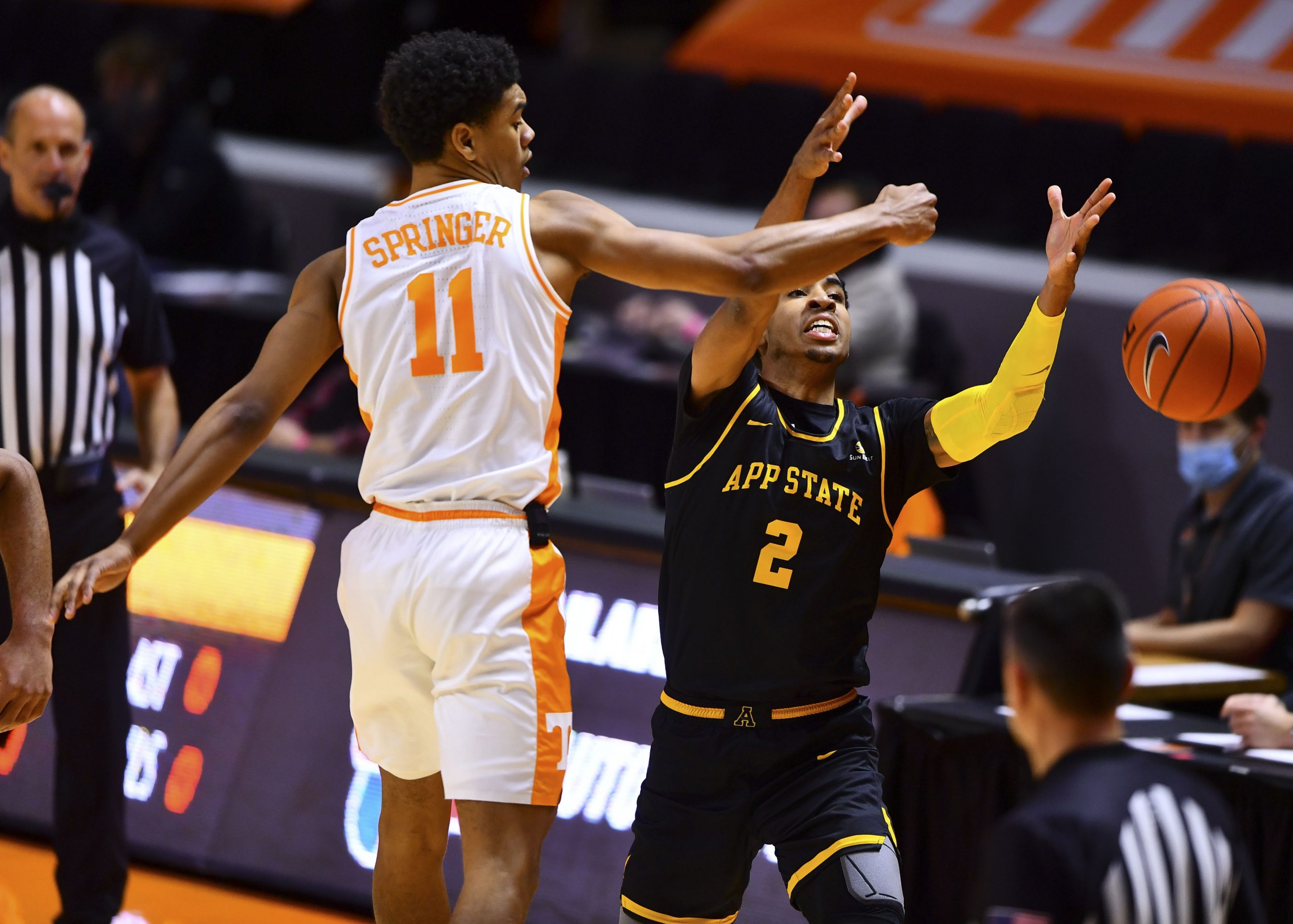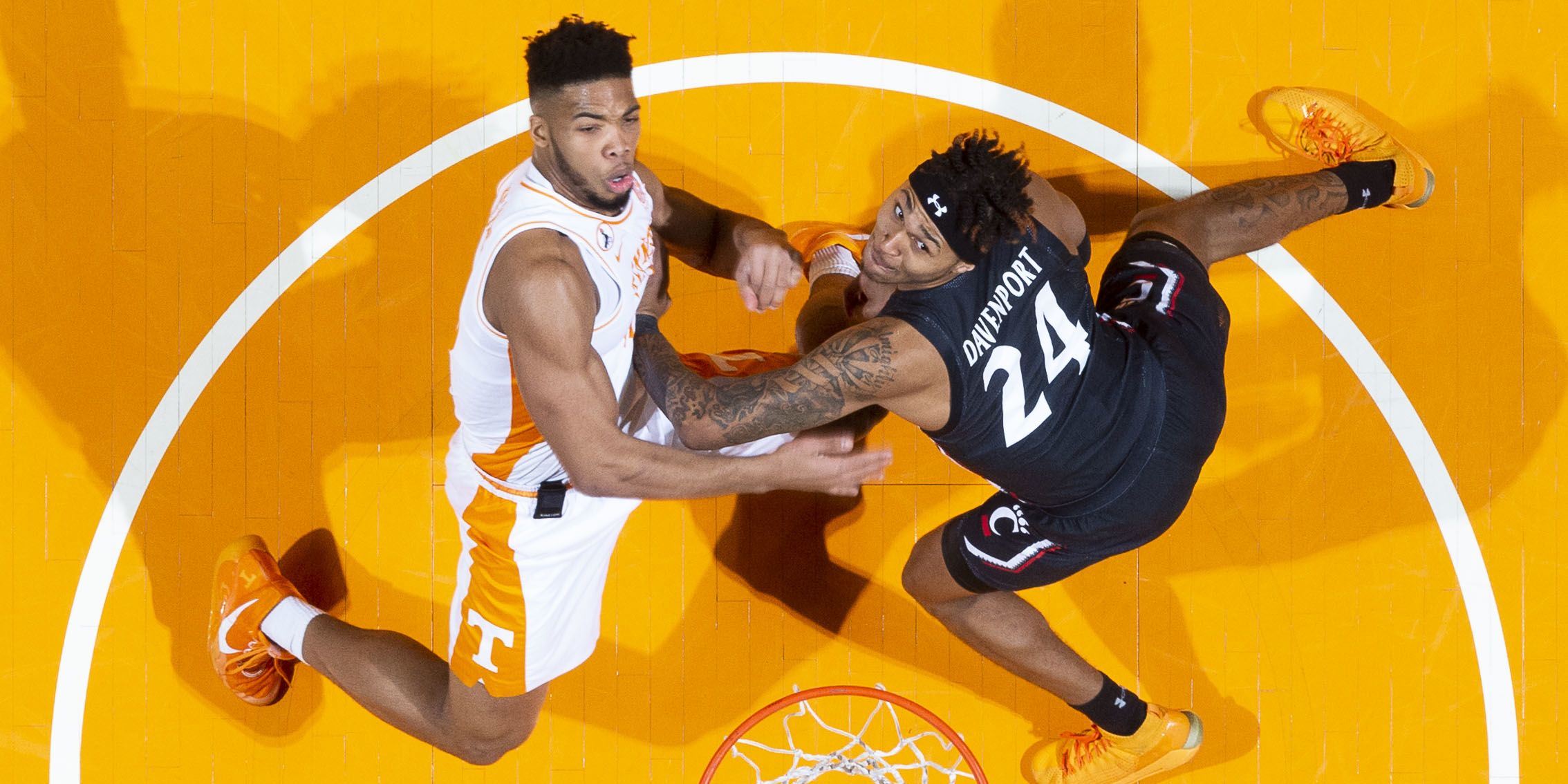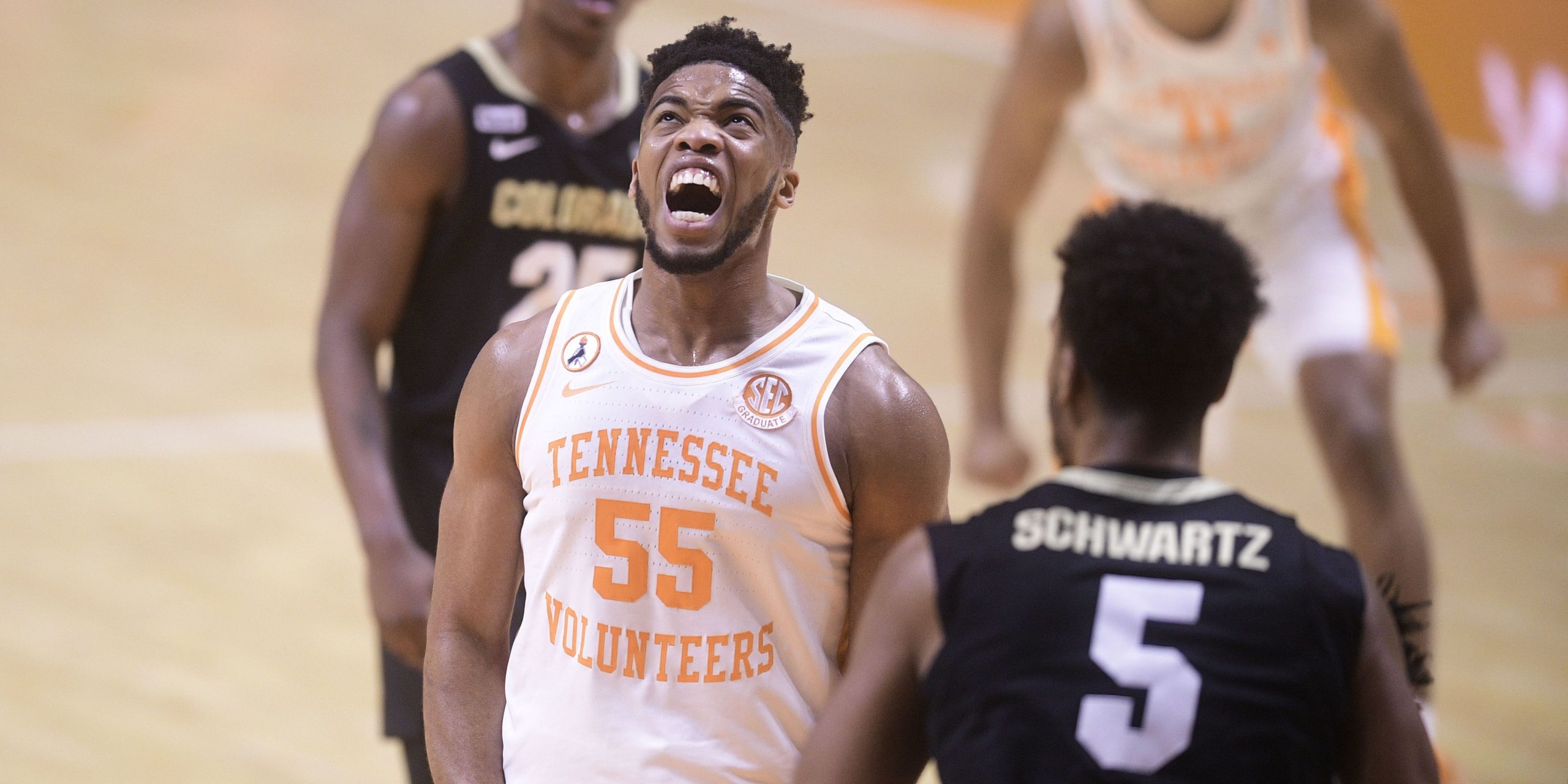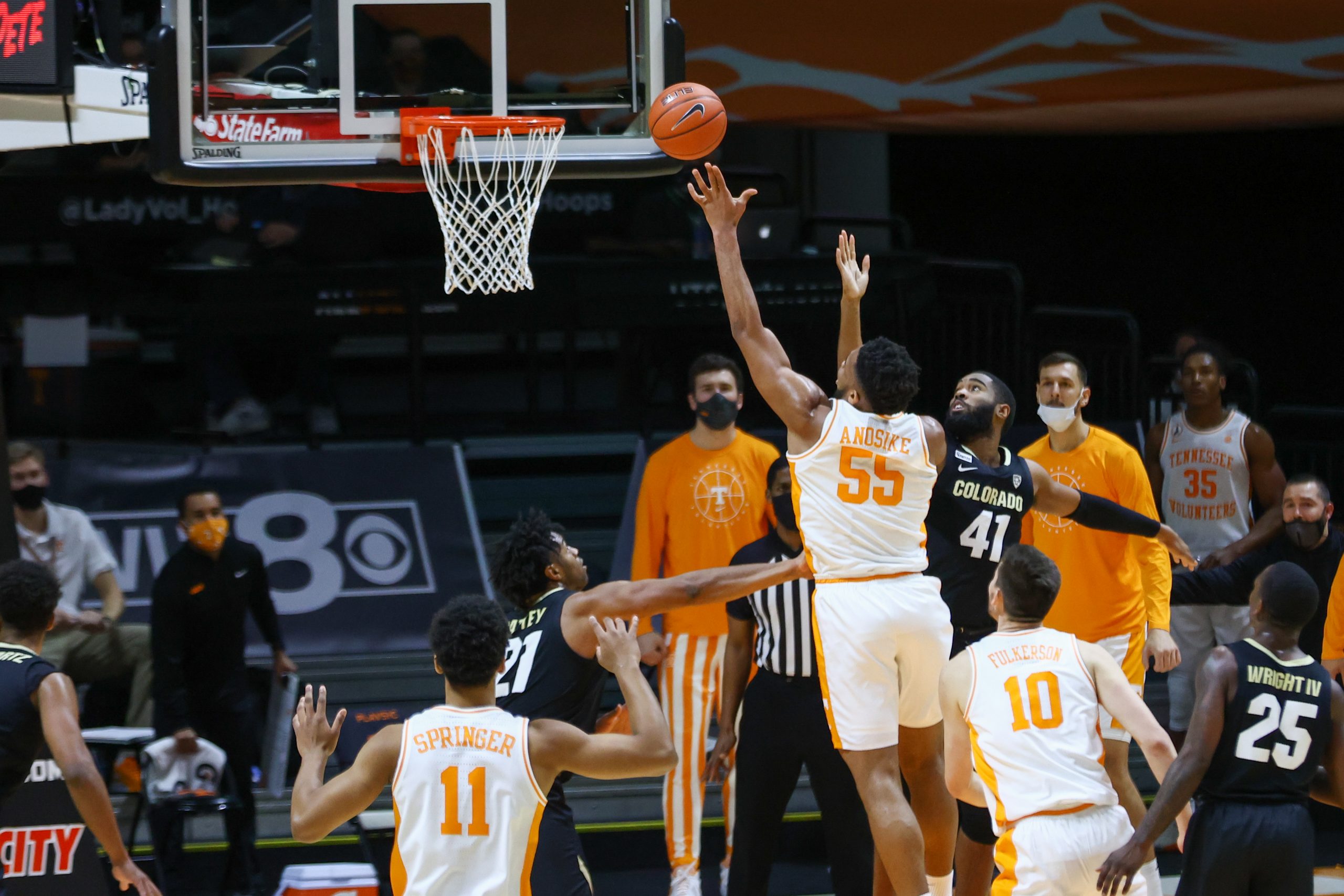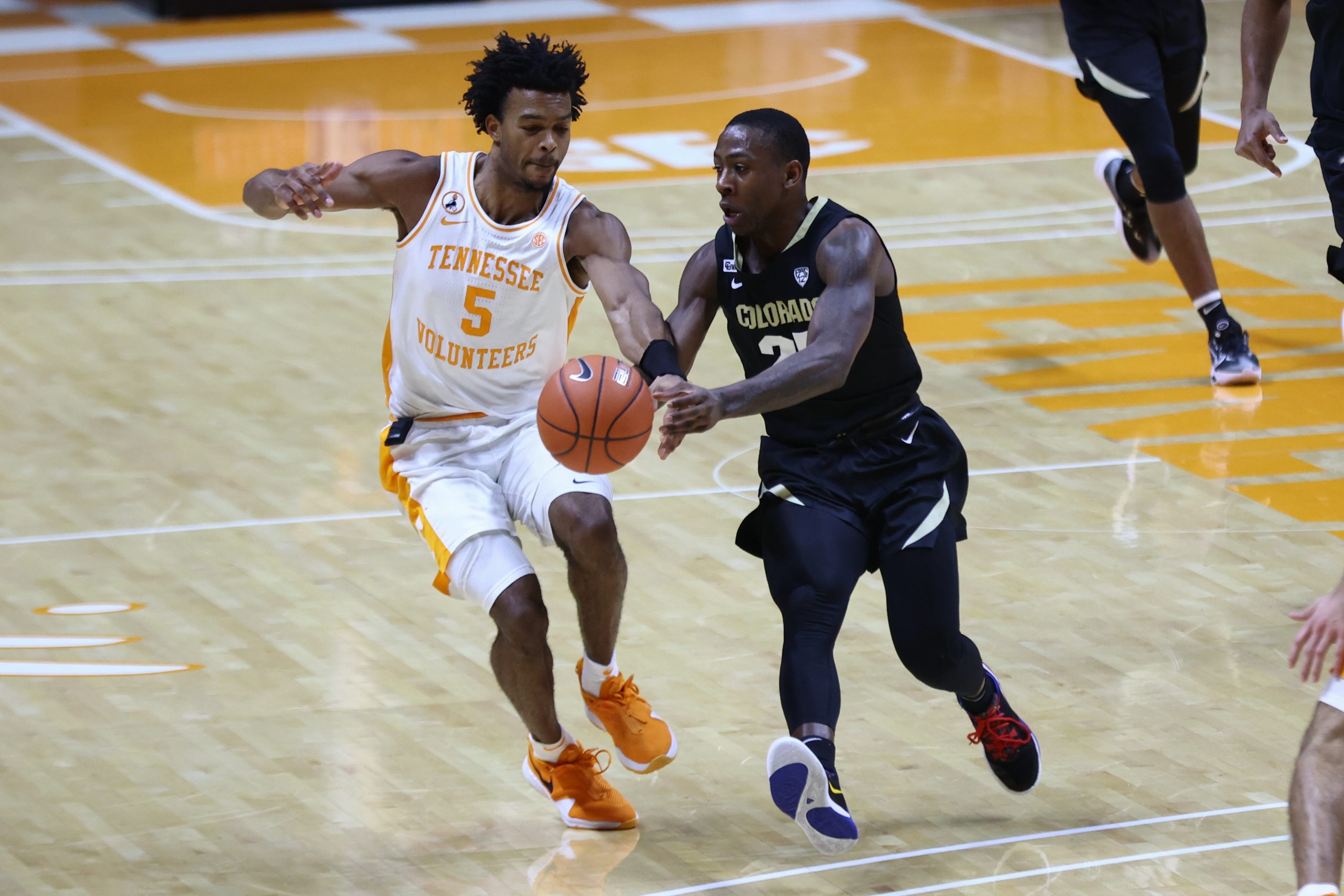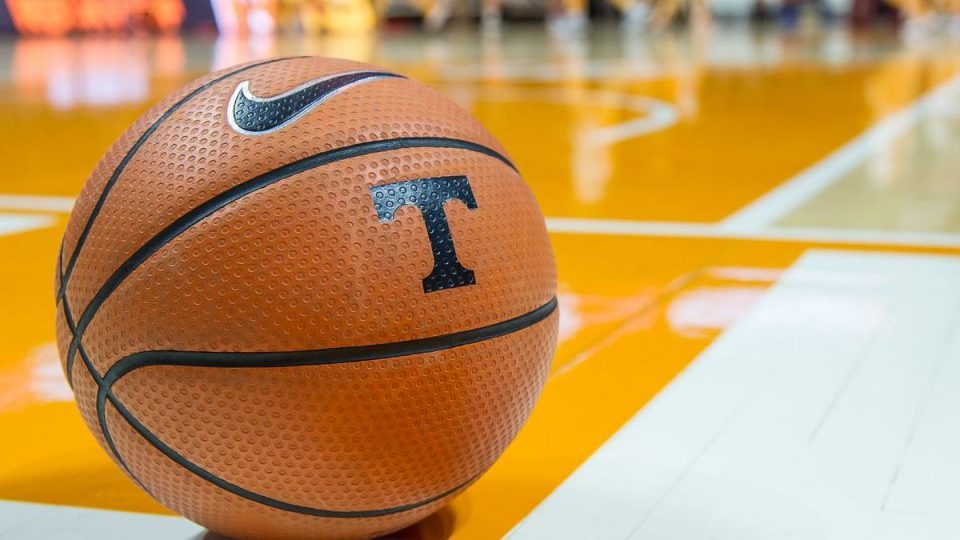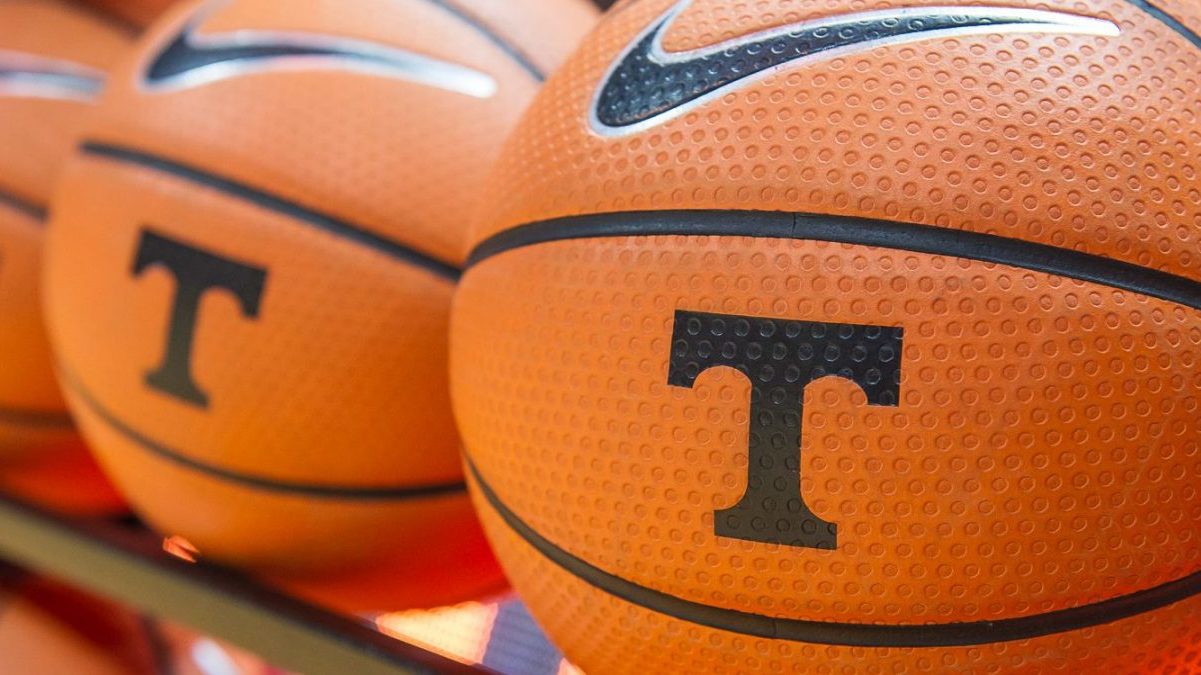So, it’s three games. Two against what we believed to be bubble teams, though Colorado has leapt to 33rd in KenPom on the strength of two absolute blowouts since then. An absolute blowout is now the expectation tonight when the Vols host Tennessee Tech, so we may not learn a whole lot more just yet. League play is 12 days away, and the opener at #16 Missouri may indeed feature the two best teams in the SEC. More answers are coming.
But let’s take a moment to begin to appreciate what may already be true: this might be the best Tennessee defense since…ever.
We’ll use KenPom data, as usual, and call it the modern era. In just three games, the Vols have already jumped up a tier in that history, now just decimal points (22.04 points better than the average team in 100 possessions) behind 2008 (22.17) and 2018 (22.27). Cuonzo’s 2014 team is next at 23.69, with the 2019 Vols still a bit away on the mountaintop (26.24), meaning they’d currently be a little more than a possession favorite on this team. Still, through three games, this Tennessee team statistically belongs in the conversation of, “Who’s the second-best Tennessee team ever?” That’s high praise.
But defensively, these Vols are the conversation.
Tennessee is third nationally in KenPom’s defensive efficiency ratings, trailing Texas Tech and Clemson. That number – 86.2 points allowed against the average team in 100 possessions – is the best in Knoxville, ever.
These Vols are seventh nationally in effective field goal percentage defense, and sixth nationally in creating turnovers. Keon Johnson and Josiah James are Top 50 players in steal percentage. And they’ve done all of this, so far, without fouling much: 29th nationally in free throw rate allowed. In three games, UT opponents have shot only 34 free throws, and are hitting just 25.4% from the arc, 33.6% from the floor.
So yeah, very good, and very good nationally. But this early, I think the most understandable context is what other great Tennessee defensive teams have done. So here’s the list of Vol defensive efficiency via KenPom, which goes back to 1997:
1. 2021 – 86.2 points allowed vs the average team in 100 possessions
Stay tuned.
2. 1999 – 88.0
Jerry Green’s second team thrived on shot-blocking and was so tough inside with C.J. Black, Isiah Victor, and Charles Hathaway. Freshman Vincent Yarbrough also created his fair share of havoc, while Brandon Wharton and Tony Harris were strong on the perimeter. This group stumbled out of the gate after a #9 preseason ranking and had some bad losses against good SEC teams on the road, but closed with six straight wins including a 91-56 blowout of #23 Florida and the SEC East clincher in the regular season finale against #13 Kentucky, one of my favorite Tennessee games ever. They ended the regular season 20-7…then lost to Mississippi State in their first SEC Tournament game. As a four seed, they beat Delaware in round one…then got smoked by Missouri State in round two. But their ceiling was quite high, as you’ll see more in a moment.
3. 2010 – 90.4
The Elite Eight squad was solid all around defensively, especially when operating at full strength. But they excelled at taking away the three ball, with J.P. Prince, Scotty Hopson, and Cameron Tatum all long enough to do so. Basketball was different even just 10 years ago, and while this team could find itself in foul trouble, their ability to make you beat them inside the arc and clean it up with Wayne Chism and Brian Williams from there almost carried them to the Final Four. In that NCAA Tournament run they held Kawhi Leonard to 12 points and San Diego State to 59, ran past 14-seed Ohio (68 points), survived a villainous 31 from Evan Turner in the Sweet 16 but kept Ohio State to 73, and lost 70-69 to Michigan State (Draymond Green with a dozen off the bench). In terms of defense, this group probably got the most out of its entire lineup than any of these teams…with the possible exception of, you know, this year.
4. 2000 – 90.9
Jerry Green, Year Three: the Vols maintained an elite shot-blocking presence and added freshman Ron Slay to their arsenal, with an incredibly deep squad capable of disrupting just about any lineup you threw their way. In the annals of Tennessee basketball heartbreak, few top this group: ranked in the Top 5 in mid-February, 24-5 at the end of the regular season and SEC Champions. They too stumbled in their first SEC Tournament game, but earned a four seed and beat the defending champs from UConn in round two. The top three seeds in the region all lost in round two, meaning the Vols were the highest ranked seed left going to the Sweet 16, where they led 8-seed North Carolina late…before faltering down the stretch. These Vols were 17th in offensive efficiency, 27th in defensive efficiency.
5. 2018 – 92.4
The most recent torchbearers, Rick Barnes’ first Vol tournament squad finished sixth nationally in defensive efficiency in 2018. While the 2019 squad gave up too many threes, which ultimately cost them in the end, the 2018 squad was elite on the arc in surrendering just 31.8% from three. James Daniel’s presence is the only personnel difference there, otherwise they were the same talented bunch that spent a month at number one the following season. Without Kyle Alexander, we saw their efficiency drop in costly fashion against Loyola Chicago.
Some of the other candidates we’d think of are just behind on this list: Kevin O’Neill’s last team is seventh, the 2008 squad is eighth, Cuonzo’s last team is ninth. They were all excellent in particular areas: O’Neill’s team inside the arc, the ’08 Vols at forcing turnovers, Cuonzo’s team at eliminating offensive rebounds.
Again, it’s early. But this Tennessee team is in the Top 10 nationally in two of the four factors, and in the Top 30 in another. They’re in the Top 30 in defending from two and from three.
It’s early. But the bar defensively isn’t just high…right now, they are the bar.
